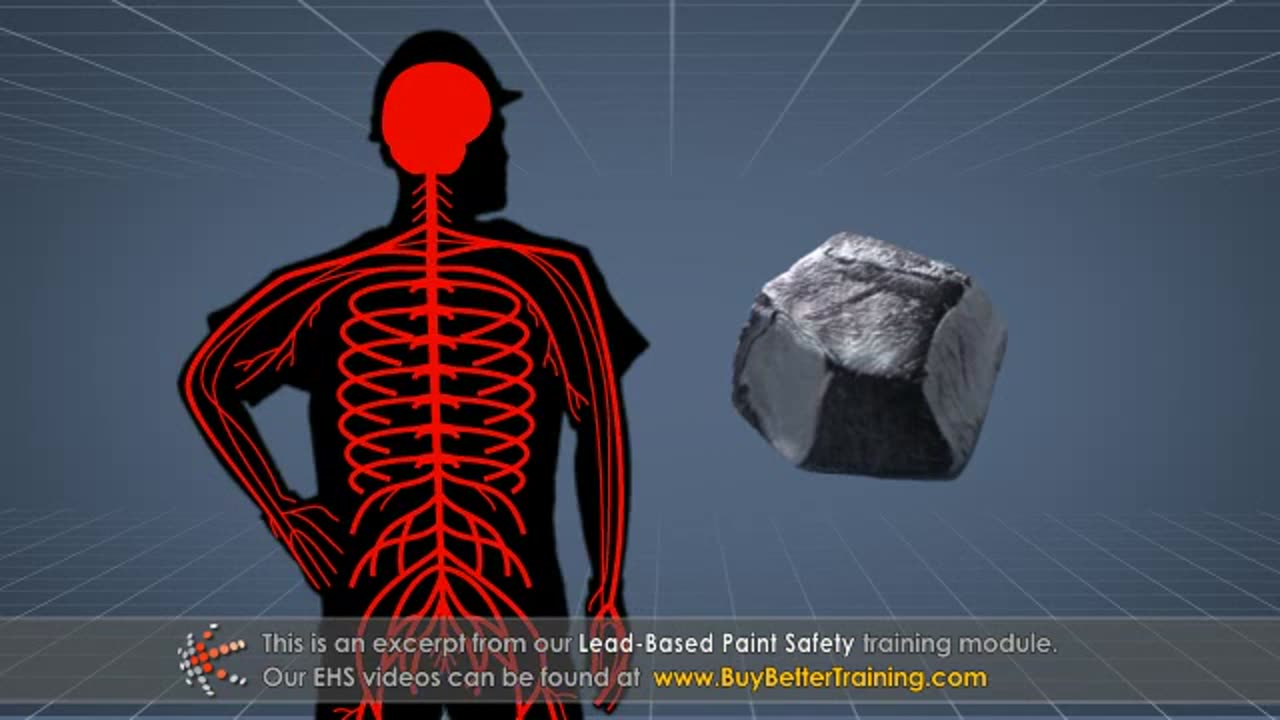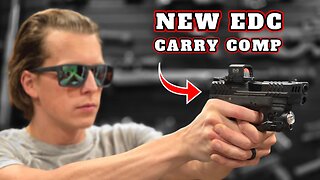Premium Only Content

Lead-Based Paint Training
Lead-Based Paint (LBP) Training focuses on educating workers about the hazards of lead in paint, safe practices for handling LBP, and compliance with regulations such as OSHA’s Lead Standard (**29 CFR 1926.62**) and the EPA's Renovation, Repair, and Painting (RRP) Rule. This training is crucial for construction, renovation, and maintenance professionals working in buildings constructed before 1978, when lead-based paint was commonly used.
---
### **Lead-Based Paint Training Outline**
#### **1. Introduction to Lead-Based Paint**
- **What is lead-based paint?**
- Paint containing lead to enhance durability and color vibrancy.
- Common in buildings constructed before 1978.
- **Why is LBP hazardous?**
- Lead exposure occurs when paint deteriorates, creating chips, dust, or fumes.
- Overview of regulatory requirements:
- OSHA Lead Standard (**29 CFR 1926.62**).
- EPA's Renovation, Repair, and Painting (RRP) Rule.
---
#### **2. Health Hazards of Lead Exposure**
- **How lead enters the body:**
- Inhalation of dust or fumes during sanding, cutting, or welding.
- Ingestion of lead-contaminated materials.
- **Health effects:**
- Short-term: Fatigue, headaches, and abdominal pain.
- Long-term: Damage to the nervous system, kidneys, and reproductive system.
- Increased risks for children and pregnant women exposed to lead dust.
---
#### **3. Recognizing Lead-Based Paint Hazards**
- Identifying potential LBP areas:
- Peeling, chipping, or cracking paint.
- Painted surfaces subject to friction (e.g., windows, doors).
- Testing for lead-based paint:
- Using EPA-approved test kits or certified inspectors.
- Reviewing Safety Data Sheets (SDS) for paint and coatings.
---
#### **4. Regulatory Compliance**
- Overview of the **EPA RRP Rule**:
- Certification requirements for contractors working with LBP.
- Worksite containment and cleaning standards.
- OSHA requirements for lead-safe practices:
- Monitoring and controlling exposure levels.
- Providing training, PPE, and medical surveillance.
---
#### **5. Controlling Lead-Based Paint Hazards**
- **Engineering controls:**
- Using wet methods to minimize dust.
- Employing HEPA-filtered vacuums for cleanup.
- **Work practice controls:**
- Avoiding dry scraping, sanding, or blasting.
- Using barriers to contain work areas and prevent dust spread.
- **Personal protective equipment (PPE):**
- Respirators, gloves, coveralls, and shoe covers.
- Ensuring proper fit and maintenance of PPE.
---
#### **6. Safe Work Practices**
- Preparing the worksite:
- Setting up containment barriers.
- Removing or covering furniture and belongings.
- Performing lead-safe work:
- Keeping surfaces damp during removal or repairs.
- Properly disposing of lead-contaminated debris and materials.
- Post-worksite cleanup:
- Thorough cleaning with HEPA vacuums and wet wipes.
- Verifying cleanliness with lead dust clearance testing.
---
#### **7. Housekeeping and Hygiene Practices**
- Preventing contamination:
- Separating work clothes from personal items.
- Avoiding eating, drinking, or smoking in work areas.
- Decontaminating after work:
- Washing hands and face thoroughly.
- Showering and changing clothes before leaving the site.
---
#### **8. Emergency Response and Exposure Procedures**
- How to respond to accidental exposure:
- Immediate decontamination of affected skin or eyes.
- Reporting incidents to supervisors and seeking medical attention.
- Managing unexpected lead hazards:
- Stopping work and notifying trained personnel.
---
#### **9. Roles and Responsibilities**
- **Employer responsibilities:**
- Provide proper training, equipment, and medical surveillance.
- Ensure compliance with OSHA and EPA regulations.
- **Employee responsibilities:**
- Follow lead-safe work practices and use PPE correctly.
- Report unsafe conditions or potential hazards.
---
#### **10. Practical Exercises and Demonstrations**
- Setting up a lead-safe worksite:
- Containment barriers, proper signage, and restricted zones.
- Hands-on practice:
- Using PPE, HEPA vacuums, and wet methods.
- Simulating safe removal or repair of LBP surfaces.
- Role-playing emergency response procedures.
---
#### **11. Quiz and Certification**
- Knowledge assessment to test comprehension.
- Issuance of certificates for participants who complete the training successfully.
---
Would you like to customize this training for your specific team, create materials, or explore certification options?
-
 1:40:22
1:40:22
Game On!
13 hours ago $3.86 earnedNFL Thursday Night Football Seahawks at Bears EXPERT Picks!
25.2K9 -
 1:50:54
1:50:54
xBuRnTx
2 hours agoWho's Ready for New Years!
16.3K1 -
 12:09
12:09
Tactical Advisor
15 hours agoSmith & Wesson Shield Plus Carry Comp
12K1 -
 4:35:25
4:35:25
Father Russell
8 hours agoDelta Force | Not A Woman? | Mad Martigan Time
54.8K5 -
 3:29:42
3:29:42
BrookieMonster
15 hours ago $44.15 earnedChristmas Stream: Marvel Rivals with CallmeSeags 🎄
175K13 -
 LIVE
LIVE
TheSaf3Hav3n
4 days ago| RUMBLES FIRST SUBATHON IS HERE!!! | DAY 4 |
369 watching -
 6:54
6:54
Dr. Nick Zyrowski
2 hours agoHIGH PROTEIN DIET Fixes Your Metabolism! - Weight Loss Not Required
14.6K5 -
 3:14:33
3:14:33
Joe Donuts Gaming
17 hours ago🟢 Live : Christmas is Here!! | Fortnite, Caroling, Light Tours and Donos !!
92.5K15 -
 6:02:38
6:02:38
CLUJ
16 hours agoCHRISTMAS EVENING HYPE!! LETS HAVE FUN GAMING!!
73.3K7 -
![I AM FINALLY BACK :: PUBG: BATTLEGROUNDS :: RUMBLE NOW HAS GIFTED SUBS!!! [Merry Christmas] {18+}](https://1a-1791.com/video/fwe1/22/s8/1/e/f/C/6/efC6v.0kob-small-I-AM-FINALLY-BACK-PUBG-BATT.jpg) 9:57:19
9:57:19
a12cat34dog
18 hours agoI AM FINALLY BACK :: PUBG: BATTLEGROUNDS :: RUMBLE NOW HAS GIFTED SUBS!!! [Merry Christmas] {18+}
65.5K8